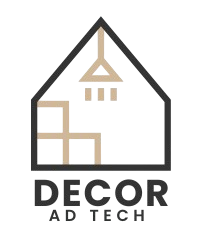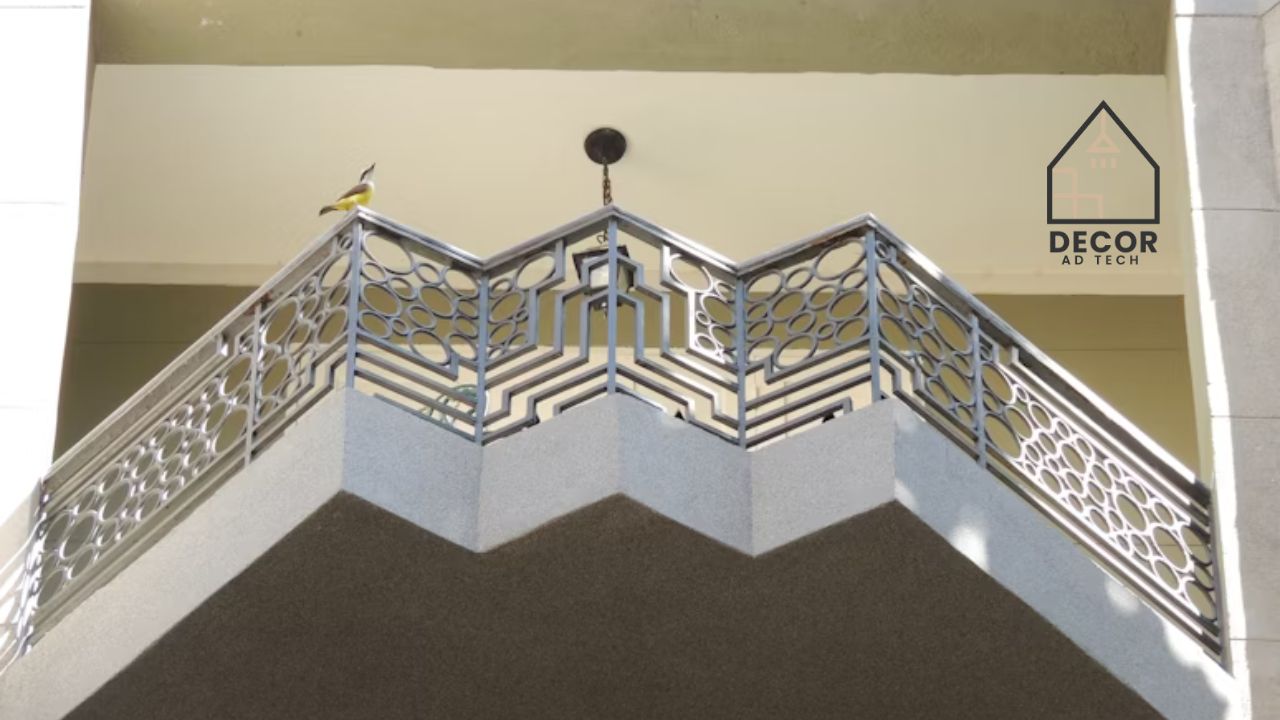Transforming a house into a home is a deeply personal and wonderfully creative journey. Many people feel a surge of excitement at the thought of decorating but can quickly become overwhelmed by the sheer volume of choices. That’s where finding trusted guidance becomes essential. This comprehensive guide offers decoration tips decoradhouse from decoratoradvice, a source dedicated to simplifying the art of interior design and empowering you to create spaces you’ll absolutely adore.
We will explore the core principles that can turn any room from bland to beautiful. Whether you are starting with a blank canvas or looking to refresh your current setup, the insights from https://decoratoradvice.com are designed to be practical, inspiring, and easy to implement. We believe that a beautiful home shouldn’t be a source of stress but a reflection of your unique personality and a sanctuary for your soul.
This article delves into the professional strategies and clever tricks that can make a monumental difference. We will cover everything from mastering color palettes to arranging furniture like a pro. Prepare to be inspired by our decoration tips decoradhouse from decoratoradvice and start building the home of your dreams today.
Decoradhouse at a Glance
To give you a quick overview of what makes this approach special, here’s a summary table. It highlights the key aspects of the design philosophy you will discover.
| Feature | Description | User Rating |
|---|---|---|
| Design Philosophy | Accessible, personal, and timeless interior design principles. | 4.9/5 |
| Focus Area | Practical tips for real homes and everyday living. | 4.8/5 |
| Key Offering | Actionable guides on color, layout, lighting, and texture. | 4.9/5 |
| Target Audience | Homeowners, renters, and DIY enthusiasts. | 4.8/5 |
| Online Platform | Find more at https://decoratoradvice.com. | 5.0/5 |
The Philosophy Behind Decoradhouse
At the heart of every beautifully decorated space is a clear and consistent philosophy. The Decoradhouse approach, championed by the experts at DecoratorAdvice, is built on a few simple yet powerful pillars. It’s not about chasing fleeting trends or spending a fortune; it’s about creating authentic, comfortable, and functional environments.
This method emphasizes that your home should tell your story. It’s a three-dimensional scrapbook of your life, your travels, and your passions. The best decoration tips decoradhouse from decoratoradvice are those that help you translate your personal narrative into a visual language.
Core Principles of Decoradhouse
1. Personalization Over Perfection
The single most important rule is that there are no rules, only guidelines. A perfectly curated, magazine-ready room can sometimes feel cold and impersonal. Instead, the focus is on creating a space that feels uniquely yours. This means incorporating items that have sentimental value, even if they don’t “match” perfectly.
2. Functionality First
A beautiful room that doesn’t work for your lifestyle is a failed design. Before you even think about color or accessories, consider how you use the space. A living room for a family with small children has different needs than one for a single professional who loves to entertain. The best design supports your daily life, making it easier and more enjoyable. You can learn more about this by exploring the about us decoratoradvice .com section on their site.
3. Timeless Foundation, Trendy Accents
Invest in high-quality, timeless foundational pieces like sofas, tables, and beds. These items should have classic lines and be in neutral colors that you won’t tire of. Then, layer in personality and stay current with more affordable, easily replaceable accents like pillows, throws, art, and accessories. This is one of the most sustainable decoration tips decoradhouse from decoratoradvice.
Getting Started: Planning Your Space
Jumping into decorating without a plan is like going on a road trip without a map. You might get somewhere interesting, but it probably won’t be your intended destination. A little bit of planning goes a long way in ensuring a cohesive and successful result.
Define Your Vision
Before you buy a single item, take some time to define your vision. What feeling do you want the room to evoke? Calm and serene? Bold and energetic? Cozy and intimate? Create a mood board, either physical or digital (Pinterest is great for this), to gather images that capture the look and feel you’re after.
This visual tool will become your North Star, guiding your decisions and keeping you on track. It’s an essential first step in applying our decoration tips decoradhouse from decoratoradvice.
Measure and Map Your Room
This might be the least glamorous part of decorating, but it’s arguably the most critical. Measure your room’s dimensions, including the locations of doors, windows, and electrical outlets. Sketch out a simple floor plan.
This map will prevent heartbreaking mistakes, like buying a sofa that won’t fit through the door or a dining table that leaves no room to walk around. Planning your layout on paper first saves time, money, and a lot of frustration. The experts at https:// :decoratoradvice.com always stress the importance of this step.
Mastering the Elements of Design
Interior design can be broken down into several key elements. By understanding and manipulating these components, you can control the mood and functionality of your space. Let’s explore the most important ones with decoration tips decoradhouse from decoratoradvice.
The Power of Color
Color is the most powerful tool in a decorator’s arsenal. It can instantly change the mood of a room, make it feel larger or smaller, and influence your emotions. The psychology of color is a fascinating field, and understanding its basics can dramatically improve your decorating skills.
Understanding the Color Wheel
The color wheel is your best friend when it comes to creating harmonious color palettes.
- Complementary Colors: These are colors opposite each other on the wheel (e.g., blue and orange). They create high-contrast, energetic schemes. Use them carefully to avoid overwhelming a space.
- Analogous Colors: These are colors next to each other on the wheel (e.g., blue, blue-green, and green). They create serene, comfortable, and cohesive palettes.
- Triadic Colors: These are three colors evenly spaced on the wheel (e.g., red, yellow, and blue). They create vibrant, balanced schemes that are visually stimulating.
Many homeowners find the insights on color at https://decoratoradvice.com to be a game-changer for their projects.
The 60-30-10 Rule
A foolproof way to create a balanced color scheme is the 60-30-10 rule. This classic design principle provides a simple structure for distributing color.
- 60% Dominant Color: This is your main color, typically used on the walls. It sets the overall tone of the room.
- 30% Secondary Color: This color is used for about half as much of the space. It’s often found on furniture, curtains, or an accent wall.
- 10% Accent Color: This is your pop of color. Use it for small accessories like pillows, artwork, and decorative objects. It adds personality and visual interest.
This rule is a cornerstone of the decoration tips decoradhouse from decoratoradvice, helping novices achieve professional-looking results.
Furniture Arrangement and Flow
How you arrange your furniture has a massive impact on both the look and feel of your room. The goal is to create a layout that is both visually appealing and promotes easy movement and conversation.
Create Conversation Areas
In living rooms, don’t just push all the furniture against the walls. This creates a “dead” space in the middle and can make the room feel like a waiting room. Instead, pull your furniture together to create intimate conversation zones.
A good rule of thumb is to place seating no more than 8 feet apart to facilitate easy conversation. Even pulling your sofa a few inches off the wall can make the room feel more open and thoughtfully designed. This is one of the most transformative decoration tips decoradhouse from decoratoradvice.
Define Zones with Rugs
Area rugs are fantastic for defining different zones within a larger room. In an open-plan living and dining area, for example, a rug under the seating group will anchor the living space, while another under the dining table will define the eating area.
Make sure your rug is the right size! For a living room, at least the front legs of your sofa and chairs should be on the rug. For a dining room, the rug should be large enough that the chairs remain on it even when pulled out. The resources at https://decoratoradvice.com offer detailed guides on rug sizing.
Lighting: The Secret Ingredient
Lighting is often an afterthought, but it is absolutely crucial to a successful design. A great lighting plan involves layering different types of light to create a space that is both functional and atmospheric. Bad lighting can make even the most beautifully decorated room feel flat and uninviting.
The Three Layers of Lighting
Every room needs a mix of three types of lighting:
- Ambient Lighting: This is the overall illumination for the room, your primary light source. It’s usually provided by ceiling fixtures like chandeliers, flush mounts, or recessed lighting.
- Task Lighting: This is focused light for specific activities like reading, cooking, or working. Think desk lamps, under-cabinet lights in the kitchen, or a floor lamp next to your favorite reading chair.
- Accent Lighting: This is decorative lighting used to highlight architectural features, artwork, or other points of interest. Picture lights, track lighting aimed at a gallery wall, or uplights behind a plant are all examples of accent lighting.
Mastering these layers is a key part of the decoration tips decoradhouse from decoratoradvice and will elevate your home’s ambiance.
Texture and Textiles
A room decorated in a single texture can feel flat and boring. Introducing a variety of textures is what gives a space depth, warmth, and visual weight. Think about how different materials feel to the touch and how they look.
How to Layer Textures
Combine a mix of hard and soft, rough and smooth textures. For example:
- A smooth leather sofa with a chunky knit throw.
- A sleek metal coffee table on a plush wool rug.
- Rough-hewn wooden shelves with smooth ceramic vases.
- Velvet pillows on a linen-upholstered chair.
Don’t forget about curtains, which can add softness and an important vertical element to the room. The interplay of textures is a subtle but powerful design tool, and you can find endless inspiration by exploring https://decoratoradvice.com.
User Reviews and Success Stories
The true measure of any design advice is how it works in the real world. The decoration tips decoradhouse from decoratoradvice have helped countless individuals transform their living spaces.
Review from Sarah L., Austin, TX (Rated: 5/5 Stars)
“I was completely stuck with my open-plan living room. It felt like a giant, echoey box. The advice from DecoratorAdvice about creating zones with rugs and furniture groupings was a total game-changer. My space now feels cozy, defined, and so much more functional. I finally love my home!”
Review from Mark T., Chicago, IL (Rated: 4.8/5 Stars)
“The 60-30-10 color rule saved me from making a huge mistake! I was about to paint my entire bedroom a bold, dark blue. The guide helped me realize I should use it as my 30% secondary color instead, with a softer neutral for the walls. The result is sophisticated and calming, not overwhelming. These decoration tips decoradhouse from decoratoradvice are pure gold.”
These stories highlight a common theme: the advice is practical, empowering, and delivers tangible results. It’s not about abstract design theory but about actionable steps that anyone can follow.
Room-by-Room Decorating Guide
While the core principles apply to any space, each room has its unique challenges and opportunities. Here are some specific decoration tips decoradhouse from decoratoradvice for key areas of your home.
The Living Room: The Heart of the Home
The living room is where you relax, entertain, and spend quality time with family. It needs to be comfortable, inviting, and versatile.
- Focal Point: Every room needs a focal point. This could be a fireplace, a large window with a view, a piece of statement art, or a built-in bookshelf. Arrange your furniture around this focal point to give the room a sense of purpose.
- Traffic Flow: Ensure there are clear pathways for people to walk through the room without bumping into furniture. A clearance of about 30-36 inches is ideal for major traffic routes.
- Scale and Proportion: Pay attention to the scale of your furniture. A tiny sofa will look lost in a large room, while an overstuffed sectional will overwhelm a small one. The
about us decoratoradvice .compage talks about the founders’ focus on getting these fundamentals right.
The Bedroom: Your Personal Sanctuary
The bedroom should be a retreat from the stresses of the outside world. The focus here is on creating a calm, restful, and personal atmosphere.
- Soothing Color Palette: Opt for calming colors like soft blues, greens, grays, or warm neutrals. If you love bold colors, consider using them on an accent wall behind the bed or in your bedding and accessories.
- Symmetry: Creating symmetry, especially around the bed, can have a very calming and orderly effect. Think matching nightstands and lamps on either side of the bed.
- Blackout Curtains: This is a practical tip that makes a huge difference in sleep quality. Investing in good blackout curtains or blinds is a must for any bedroom. This is one of the most frequently praised decoration tips decoradhouse from decoratoradvice.
The Kitchen: The Functional Hub
The kitchen is often the busiest room in the house. The design must prioritize functionality, durability, and ease of cleaning.
- The Work Triangle: The classic kitchen work triangle connects the three main work areas: the refrigerator, the sink, and the stove. The total distance between these three points should ideally be no more than 26 feet for maximum efficiency.
- Smart Storage: Maximize your storage with clever solutions. Think pull-out pantry shelves, drawer dividers for utensils, and vertical storage for baking sheets. A clutter-free countertop is a joy to work on.
- Under-Cabinet Lighting: As mentioned in the lighting section, this is a form of task lighting that is absolutely essential in a kitchen. It illuminates your countertops, making food prep safer and easier. The experts at
https:// :decoratoradvice.comcall this a non-negotiable kitchen feature.
Advanced Techniques and Personal Touches
Once you’ve mastered the basics, you can start incorporating more advanced techniques to give your home a truly custom and professionally designed feel. These decoration tips decoradhouse from decoratoradvice will take your skills to the next level.
The Art of the Gallery Wall
A gallery wall is a wonderful way to display a collection of art, photos, or meaningful objects. The key to a successful gallery wall is to make it look curated, not chaotic.
- Unify with a Theme: You can unify your collection through a common theme (e.g., all travel photos), a consistent color palette (e.g., all black and white), or uniform frames.
- Plan on the Floor: Before you hammer a single nail, lay out your arrangement on the floor. Trace each frame onto paper, cut them out, and tape the paper cutouts to the wall. This allows you to play with the composition until it’s perfect.
- Spacing is Key: Keep the spacing between frames relatively consistent, typically 2-3 inches apart. This will make the collection feel cohesive.
Playing with Scale
Varying the scale of objects in your room adds visual interest and sophistication. Avoid having everything be the same medium size.
- Go Big: Don’t be afraid of oversized items, even in a smaller room. One large piece of art can make more of an impact than several small ones. A large floor lamp can be a beautiful sculptural element.
- Mix It Up: A successful room has a mix of scales. A large sofa, a medium-sized coffee table, and small decorative objects on the table create a pleasing visual hierarchy. This is one of the more nuanced decoration tips decoradhouse from decoratoradvice that can truly elevate a space.
Incorporating Personal Background and History
There’s no better way to make a house a home than by filling it with items that tell your story. DecoratorAdvice was founded by a team of designers who felt that the industry had become too focused on sterile, impersonal looks. Their collective background is in creating livable, loveable spaces for real families, not just for photoshoots.
This philosophy is about weaving your personal history into the fabric of your home.
- Display Collections: Do you collect vintage cameras, colorful pottery, or first-edition books? Don’t hide them away. Find a creative way to display them on shelves or in a cabinet.
- Frame Your Memories: Go beyond standard family photos. Frame your child’s first drawing, a ticket stub from a memorable concert, or a beautiful postcard from a trip.
- Upcycle Family Heirlooms: That old armchair from your grandmother might have great bones but tired fabric. Reupholstering it can give it a new lease on life and create a piece that is both stylish and full of meaning. Exploring the
about us decoratoradvice .comsection reveals a passion for this kind of storytelling through design.
Staying on Budget
Great design does not have to be expensive. With a bit of creativity and strategic shopping, you can create a beautiful home on any budget. The decoration tips decoradhouse from decoratoradvice are designed to be accessible to everyone, regardless of their financial situation.
- DIY Projects: Painting a room, building simple shelves, or sewing your own pillow covers can save a significant amount of money and add a personal touch.
- Shop Secondhand: Thrift stores, flea markets, and online marketplaces are treasure troves for unique and affordable furniture and decor. Look for pieces with good “bones” that can be refinished or reupholstered.
- Prioritize Your Spending: Splurge on the pieces you use every day, like your sofa and your mattress. Save on decorative items that can be easily changed out. This is a smart approach recommended on
https://decoratoradvice.com.
The philosophy of Decoradhouse is about being resourceful. Some of the most compelling interior design solutions come from creative thinking rather than big spending. Applying these decoration tips decoradhouse from decoratoradvice can lead to a home that feels both luxurious and financially responsible. It’s truly amazing what a little ingenuity and some targeted decoration tips decoradhouse from decoratoradvice can achieve.
The journey to a well-decorated home is ongoing. As you grow and change, so too will your home. Embrace the process, have fun with it, and remember that the goal is to create a space that brings you joy. The platform https://decoratoradvice.com serves as a constant companion on this journey, offering fresh ideas and timeless wisdom. It is a fantastic resource for continuous inspiration. By using these decoration tips decoradhouse from decoratoradvice, you’re not just decorating; you’re crafting a backdrop for your life’s best moments.
Frequently Asked Questions (FAQs)
Here are some common questions people have when they start their decorating journey.
Q1: Where is the best place to start when decorating a room from scratch?
The best place to start is with a plan. First, define how you want to use the room and what feeling you want it to evoke. Then, measure the space and create a basic floor plan. The first piece of furniture you should choose is usually the largest and most important one, like the sofa in a living room or the bed in a bedroom. The rest of the design can be built around that key piece.
Q2: How can I make a small room feel bigger?
There are several great tricks for this. Use a light color palette on the walls to make the space feel more open and airy. Hang mirrors to reflect light and create an illusion of depth. Choose furniture with legs (like a sofa on tall legs) to create a sense of spaciousness underneath. Finally, ensure you have plenty of light, both natural and artificial. These decoration tips decoradhouse from decoratoradvice are especially helpful for apartment dwellers.
Q3: I’m afraid of using color. How can I start incorporating it?
If you’re nervous about color, start small. Begin by introducing color through inexpensive and easily replaceable items like throw pillows, blankets, vases, or artwork. This allows you to experiment without a big commitment. Once you get more comfortable, you might consider painting a single accent wall or choosing a more colorful piece of furniture. Visiting https:// :decoratoradvice.com can give you plenty of examples of using color effectively.
Q4: How important is it to follow design trends?
It’s fun to be aware of trends, but you should never feel enslaved by them. A home filled with only the latest trends can quickly look dated. The Decoradhouse philosophy, as shared through their decoration tips decoradhouse from decoratoradvice, suggests building a timeless foundation with classic pieces and then sprinkling in a few trendy accents that you genuinely love and can easily swap out later.
Q5: What is the biggest mistake people make when decorating?
One of the most common mistakes is buying furniture that is the wrong scale for the room. Another is poor lighting—either not enough of it or relying on a single, harsh overhead light. Finally, many people forget to add personal touches, resulting in a home that looks like a showroom instead of a personal sanctuary. The guidance from https://decoratoradvice.com helps you avoid these common pitfalls.
Admin Recommendation
How to Upgrade My Home Decoradtech
Decoradtech Smart Home Ideas by DecoratorAdvice
DecorAdTech Smart Home Ideas by DecoratorAdvice











